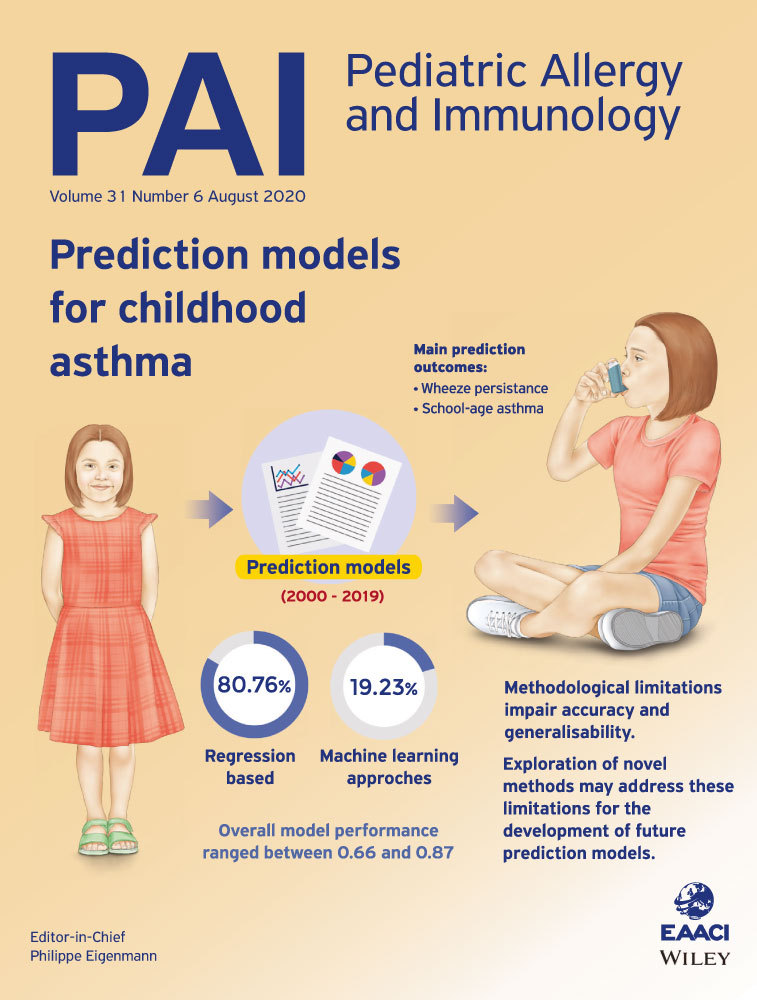Reply to Korppi and Riikonen
The peer review history for this article is available at https://doi.org/10.1111/pai.13272
To the Editor
We highly appreciate Korppi and Riikonen's comment to our article regarding trajectories of lung function and bronchial hyper-reactivity (BHR) during puberty in children with bronchiolitis in infancy.1, 2 The comment offers an overview of the published literature based on three Finnish and Norwegian cohorts following children hospitalized for bronchiolitis in early age. Our published study is actually a substudy of a larger study of approximately 200 young adults with previous bronchiolitis and matched controls, performed at 17-20 years of age. This main study is now under preparation and will focus on differences between groups and associations with risk factors. The published substudy represents the subjects who have undergone lung function testing at both 11 and 18 years of age.1, 3
We have learned from longitudinal cohort studies that there is a distribution of lung function trajectories throughout a lifespan.4 This has been shown both in unselected populations and after other infant respiratory diseases such as bronchopulmonary dysplasia associated with extreme prematurity.4 These developmental processes are controlled and modulated by a range of genetic and environmental factors that vastly influence individual respiratory health and disease.5 It has been hypothesized that chronic obstructive pulmonary disease (COPD) begins in childhood, either as a result of an early respiratory insult or precipitated by a disadvantageous intrauterine environment.5 To what extent, in what way, and importantly, which early childhood events have an impact on lung function trajectories, is therefore a highly prioritized research agenda.
Bronchial hyper-reactivity is a hallmark of asthma, but also reported in individuals without respiratory symptoms, even in infants, and may precede the development of severe bronchiolitis, asthma, and possible COPD.6 Pike and colleagues argue for a causal role of early fetal growth restriction in the development of BHR, substantiated by findings in a mouse model,7 and also found in a study of children born extremely preterm.8 Persisting BHR is also shown after bronchiolitis.3 In our study, we found stable BHR during puberty, with neither improvements toward the normal range nor any signs of further deterioration.1 Moreover, we found that BHR at age 11 was independently associated with asthma at age 18.1 The results support a notion that increased BHR is a feature that is established in early life, either due to airway damage caused by the respiratory insult during bronchiolitis, or already present prior to the respiratory event. Is it possible that BHR is an inborn feature leading to both a severe course of bronchiolitis in infancy, asthma during childhood and young adulthood, and finally COPD in later adulthood? Larger population-based cohort studies with early measurements of lung function and BHR will be necessary to answer this question.
Korppi and Riikonen argue that future follow-up studies after bronchiolitis should focus on the development of irreversible airflow obstruction by including reversibility testing rather than assessments of BHR.2 However, testing of reversibility cannot reliably be performed at the same day as tests for BHR. Based on the considerations above, we chose to prioritize tests of BHR.
We agree that the Norwegian and Finnish studies published so far have relatively few participants, and are therefore hampered by low statistical power. Sufficiently powered studies are certainly welcome in this area of respiratory medicine and important to confirm our results suggesting stable predicted lung function and no changes of BHR during puberty after bronchiolitis in infancy.
CONFLICT OF INTEREST
The authors have no conflicts of interest to declare.
AUTHOR CONTRIBUTION
Karen Galta Sørensen: Conceptualization (equal); Writing-original draft (lead); Writing-review & editing (equal). Knut Øymar: Conceptualization (equal); Supervision (supporting); Writing-review & editing (equal). Thomas Halvorsen: Conceptualization (equal); Supervision (supporting); Writing-review & editing (equal). Ingvild Bruun Mikalsen: Conceptualization (equal); Supervision (lead); Writing-review & editing (equal).




